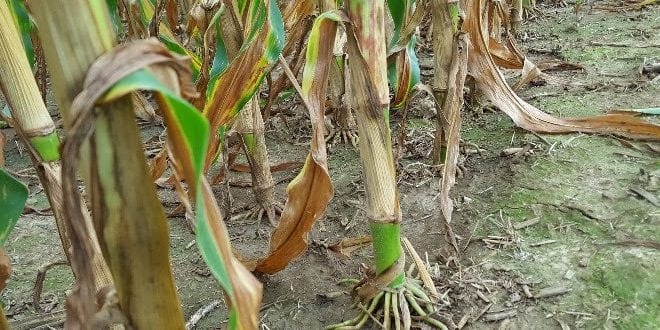
Nitrogen (N) stress at any time in a corn plant’s growth and development subtracts from yield potential. Knowing how much N is available is critical to high-yield strategies.
N is a constituent of all protein within the corn plant. When deficient, normal growth and development is thwarted. The chart shows the approximate amount of N removed in corn grain and stover (i.e., the minimum amount of N required to grow the crop).
N removed by corn crop
(bu/acre)
150
200
250
lbs of actual N
102
136
170
in stover
lbs of actual N
51
68
85
Removed
lbs of actual N
153
204
255
*Adapted from Sawyer and Malarino, 2007.
N plays a crucial role in ear and kernel development. A study evaluating nitrogen translocation within the plant indicates that N moves to the ear from other plant tissues even prior to silking, apparently for the nitrogen-intense process of kernel embryo formation (Ciampitti and Vyn, 2010). This study also reported that continued ear growth and yield accumulation from R1 to R6 is closely associated with N content in the above-ground plant tissues.
Further, the study confirmed that continued N uptake during the ear-fill period can minimize the remobilization of N from vegetative to reproductive tissues. This means that the plant does not have to cannibalize the leaves to provide N for kernel development when it can take up N from the soil during this period. This allows the plant to retain more green leaf area in late summer and early fall, which increases the duration of photosynthesis, carbohydrate production and grain yield.

Meeting Corn Needs for N
Extremes in weather can threaten soil nitrogen reserves as well as hinder resupply by ground equipment.
To help avoid weather-related pitfalls to corn N supply, growers can spread their risk by applying N at multiple times or using products that help protect specific N fertilizers from rainfall-related losses. This is especially important on soils subject to N loss, such as sandy soils that are prone to N leaching, or heavier soils in high rainfall areas that may become saturated and subject to denitrification losses. This approach to N management can also increase the bottom line by decreasing the total amount of N applied.
Nitrogen deficiency symptoms initially appear as a “V” shaped yellowing on lower leaves that begins at the tip and progresses toward the stalk. Nitrogen deficiency can also cause ears with tip-back, poor kernel set, and shallow kernel development. Fields that have experience excessive rainfall, ponding, and saturated soils could be exhibiting the symptoms discussed above.
(photo: Ohio State University)